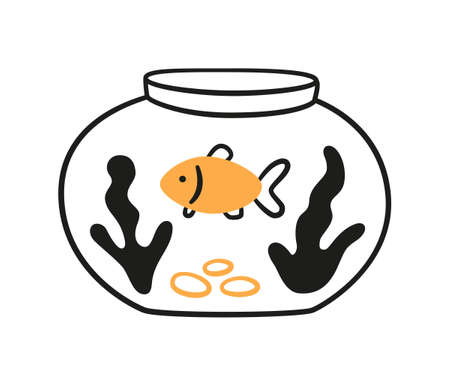1. Origins of Ice Fishing in America
Ice fishing has deep roots in the United States, tracing back to both indigenous communities and early European settlers. For many Native American tribes living in northern regions, ice fishing was more than just a pastime—it was a vital way to secure food during the harsh winter months. Tribes like the Ojibwe, Cree, and Inuit developed unique methods to catch fish beneath thick sheets of ice, ensuring their survival when other resources were scarce.
Indigenous Techniques and Tools
Native Americans used simple yet effective tools crafted from natural materials. They would chip holes in the ice using hand-carved bone or wooden chisels. For bait, they often used small pieces of meat or fish. To catch fish, they fashioned lines from plant fibers or animal sinew and used hooks made from bone or carved wood. Some tribes also built ice shelters out of snow blocks or animal skins to protect themselves from freezing winds while they fished.
| Tool/Technique | Description | Material Used |
|---|---|---|
| Ice Chisel (Chipper) | Cutting holes through thick ice layers | Bone, Wood |
| Fishing Line | Tying bait and catching fish under the ice | Plant Fiber, Animal Sinew |
| Fish Hook | Catching fish after attracting them with bait | Bone, Wood |
| Ice Shelter | Protection from cold wind while fishing | Snow Blocks, Animal Skins |
The Role of Early Settlers
When European settlers arrived in North America, they quickly adopted and adapted these indigenous techniques for their own needs. Facing long winters and limited supplies, settlers learned how to make holes in the ice and use hand lines to catch fish like perch, trout, and walleye. While their tools evolved—using iron chisels and metal hooks—the basic methods remained similar.
The Importance of Ice Fishing for Survival
For both indigenous peoples and settlers, ice fishing was a matter of survival rather than recreation. It provided a critical source of protein at times when hunting game was difficult or crops could not be harvested. These early practices laid the foundation for what would become a beloved winter tradition across many parts of the United States today.
2. Ice Fishing in American Popular Culture
Regional Identities and Rural Traditions
Ice fishing is more than just a winter hobby; it’s a way of life for many Americans, especially in the northern states like Minnesota, Wisconsin, Michigan, and North Dakota. In these regions, ice fishing is woven into the local identity. It’s a tradition that brings families and friends together, often passed down from generation to generation. People look forward to setting up their ice shanties on frozen lakes each winter, sharing stories, and enjoying the peacefulness of the cold outdoors.
Ice Fishing Traditions Across the U.S.
| Region | Tradition |
|---|---|
| Midwest (Minnesota, Wisconsin) | Annual ice fishing festivals, heated fish houses, group gatherings on lakes |
| Northeast (Maine, Vermont) | Family outings, use of traditional tip-ups, local competitions |
| Great Lakes (Michigan) | Community tournaments, snowmobile access to remote spots |
| Northern Plains (North Dakota) | Homemade shelters, cooking fresh fish on-site, storytelling sessions |
Ice Fishing in American Stories and Folklore
Ice fishing has found its place in American folklore and storytelling. Many tales highlight the patience needed to catch fish through the ice or the humorous mishaps that can happen out on a frozen lake. These stories are often shared around campfires or at community gatherings, adding color to regional cultures.
Portrayal in Movies and TV Shows
Ice fishing has been featured in various movies and television shows that showcase rural life or explore themes of friendship and perseverance. For example:
- “Grumpy Old Men”: This classic comedy set in Minnesota centers around two neighbors who bond over their love for ice fishing.
- “Fargo”: The hit movie and TV series frequently show scenes of ice fishing as part of daily life in the upper Midwest.
- “Ice Road Truckers”: While primarily about trucking, this reality show often touches on winter survival skills familiar to those who ice fish.
The Role of Ice Fishing in Community Life
Beyond entertainment, ice fishing continues to be a cornerstone of rural community life. Events like local derbies bring people together even during harsh winters. These gatherings are not just about catching fish—they’re about creating memories and maintaining connections in tight-knit communities.

3. Technological Advancements and Equipment
Ice fishing in the U.S. has come a long way from its humble beginnings. Early anglers relied on basic tools like hand augers, simple rods, and wooden shanties for shelter. Over time, technology has transformed the experience, making it more comfortable, efficient, and exciting. Lets take a closer look at how ice fishing gear and equipment have evolved over the years.
From Hand Tools to High-Tech Gear
In the past, drilling a hole in the ice meant using a hand auger—a manual tool that required plenty of elbow grease. Today, electric and gas-powered augers can cut through thick ice in seconds, saving time and energy. Wooden shanties were once the norm for staying warm on frozen lakes, but now anglers can choose from lightweight pop-up shelters to insulated, heated cabins complete with built-in seating.
Comparison of Traditional vs. Modern Ice Fishing Equipment
| Category | Traditional Equipment | Modern Equipment |
|---|---|---|
| Drilling Holes | Hand Auger | Electric/Gas Auger |
| Shelters | Wooden Shanty | Heated Pop-Up Shelter |
| Finding Fish | Guesswork/Experience | Sonar Fish Finder |
| Tackle & Rods | Simple Wooden Rods | Graphite Rods & Custom Reels |
| Navigation & Planning | Paper Maps/Word of Mouth | Digital Apps & GPS Devices |
The Role of Electronics in Modern Ice Fishing
The biggest game changer has been electronics. Sonar fish finders allow anglers to see what’s happening under the ice in real time—no more guessing where the fish are hiding! GPS devices and smartphone apps help fishermen find the best spots, track weather conditions, and even connect with other anglers nearby.
Popular High-Tech Tools Used by U.S. Ice Anglers:
- Sonar Fish Finders: Show fish location and depth below the ice.
- Underwater Cameras: Give a live view of fish behavior and structure.
- Portable Heaters: Keep shelters warm even in freezing temperatures.
- Digital Apps: Help with mapping lakes, logging catches, and checking regulations.
- Bait Aerators: Keep live bait fresh longer during cold outings.
The American Ice Fishing Experience Today
This blend of tradition and technology reflects the unique culture of ice fishing in the U.S.—where age-old practices meet modern convenience. Whether you prefer old-school methods or cutting-edge gear, there’s never been a better time to enjoy this classic winter pastime.
4. Modern Ice Fishing Communities and Events
The Rise of Ice Fishing Tournaments
Ice fishing has transformed from a quiet, solitary sport to an exciting, community-driven activity across the northern U.S. One of the biggest changes in recent decades is the popularity of ice fishing tournaments. These events draw hundreds or even thousands of anglers who compete for prizes ranging from cash to new trucks and fishing gear. Tournaments are often held on well-known lakes in states like Minnesota, Wisconsin, and North Dakota, turning frozen landscapes into bustling hubs of friendly competition.
Popular Ice Fishing Tournaments in the U.S.
| Tournament Name | Location | Unique Feature |
|---|---|---|
| Brainerd Jaycees Ice Fishing Extravaganza | Minnesota | World’s largest ice fishing contest |
| Battle on Bago | Wisconsin | Family-friendly with large prizes |
| Devils Lake Ice Fishing Tournament | North Dakota | Focuses on big perch and walleye catches |
Social Gatherings on the Ice
Beyond competition, ice fishing is a major social event. Many anglers set up “ice shacks” or “fish houses”—cozy shelters equipped with heaters, snacks, and even TVs. Friends and families gather on the ice for cookouts, storytelling, and relaxation while waiting for a bite. On weekends, popular lakes can look like small towns made up of colorful shanties and trucks, creating a unique winter community vibe.
The Vibrant Subculture of Northern Anglers
Ice fishing has developed its own subculture full of traditions, lingo, and shared experiences. From swapping stories about “the one that got away” to customizing sleds and augers for better performance, ice anglers share a strong sense of camaraderie. Social media groups and local clubs help connect newcomers with seasoned pros, making knowledge-sharing easy and fun. Whether youre a first-timer or a lifelong enthusiast, joining this vibrant community means embracing hearty laughter, helpful advice, and a passion for cold-weather adventure.
5. Environmental Impacts and Future Trends
How Environmental Changes Are Affecting Ice Fishing
Ice fishing in the U.S. has always depended on cold, consistent winters. But in recent years, anglers across states like Minnesota, Wisconsin, and Michigan have noticed big changes in ice conditions. Warmer winters are causing lakes to freeze later and thaw earlier, which shortens the ice fishing season. Unpredictable weather also means thinner or less stable ice, making safety a bigger concern for everyone out on the lake.
Key Environmental Changes Impacting Ice Fishing
| Environmental Factor | Impact on Ice Fishing |
|---|---|
| Rising Temperatures | Shorter ice seasons, less reliable ice thickness |
| Changes in Snowfall | Affects lake insulation and fish behavior |
| Pollution & Runoff | Alters water quality and can harm fish populations |
| Invasive Species | Disrupts local ecosystems and native fish stocks |
The Role of Conservation Efforts
Thankfully, anglers and local communities are stepping up their conservation game. Many states now have stricter fishing regulations—like catch-and-release policies and limits on certain species—to help keep fish populations healthy. Organizations such as the Minnesota DNR and local angling clubs are educating people about safe practices, invasive species prevention, and the importance of clean lakes.
Popular Conservation Practices in U.S. Ice Fishing Communities
- Promoting catch-and-release for threatened species
- Organizing shoreline clean-up events before and after the season
- Educating anglers about proper bait disposal to prevent invasive species spread
- Encouraging use of eco-friendly gear (like lead-free tackle)
- Monitoring ice thickness and reporting unsafe conditions to the community
Looking Ahead: What’s Next for Ice Fishing?
The next generation of ice anglers is likely to see even more change—and innovation. Technology is already playing a huge role with smart sonar devices, portable shelters with built-in heaters, and apps that track ice conditions in real time. As climate patterns continue to shift, we’ll probably see even greater emphasis on safety tools and eco-friendly practices. Here’s what experts predict for the future of ice fishing:
Future Trends in U.S. Ice Fishing
| Trend | Description | Impact on Anglers |
|---|---|---|
| Sustainable Gear Innovation | Bait and tackle designed to be environmentally friendly and reduce pollution risks. | Helps preserve water quality and fish habitats for future generations. |
| Real-Time Safety Tech | Mobile apps, GPS trackers, and drones used for checking ice thickness and emergency alerts. | Makes it safer for all ages to enjoy ice fishing with added peace of mind. |
| Youth Engagement Programs | Camps, workshops, and school partnerships to teach kids about fishing ethics and environmental stewardship. | Keeps the tradition alive while fostering respect for nature among young anglers. |
| Ecosystem Monitoring Initiatives | Lakeside sensors and community science projects tracking water quality, species health, and weather trends. | Empowers local anglers to protect their favorite fishing spots. |

